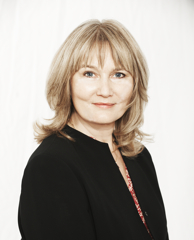Patent power

We ask Ann Chapman, co-founder of Minesoft, about patent information and 10 years of the PatBase patent database
How did PatBase come about?
My husband and I started Minesoft 17 years ago and, until 2003, we were a distributor for Questel. PatBase began when [patent search and translation company] RWS asked us to develop a database that could be used for the company’s internal searches. We decided to develop something that could be sold externally too.
RWS is very strong on patent classifications, which have developed differently in different countries. As the industry developed, it was agreed that countries governed by the World Intellectual Property Organization (WIPO) would assign international patent classifications to patents too but these are not as specific and detailed as the national ones. RWS was very keen that the database would enable detailed search on both national and international classifications.
We also wanted tools to manipulate and link data in a web environment. Our data is all stored behind in a big relational database. The challenge for us is to continuously build up the amount of content – we’ve quadrupled capacity in the last year – while keeping up speeds. PatBase has a reputation for being extremely fast and our IT team is determined to maintain high speeds, regardless of the extent to which the collection has grown since its launch a decade ago.
What else is important with patents?
The number in a patent family is critical to the legal community. Many numbers can look very similar but mean very different things. A few years ago we developed priority maps that show how a patent family is built up, which is very useful to lawyers.
We have also just added a legal status overlay, which will allow people to see what companies have done around the world, not just where patents were filed but where people are paying fees. This shows, for example, if a patent is still valid and in which countries people could bump into a patent infringement.
Patents are fascinating documents. I’ve always liked the main idea of a patent document, that there is enough information in a patent for someone to be able to recreate the invention. The goal is to spread knowledge around the world and in return the inventors get a period of time to exploit the idea.
How do patents fit with peer-reviewed literature?
Around 80 per cent of the information in patents never appears anywhere else, according to a report by the European Commission and the European Patent Office. About a year ago PatBase launched an Inspec interface. Inspec is the most cited source of prior art in engineering patents and we thought it would be very interesting to tie together relevant patents, journals articles and other resources.
However Inspec is an abstracting service and at some point people need to get to the full-text article. Our customers are used to full text so before we really tie the resources closely together we need to look at ways to bring in full-text scholarly sources.
The nature of the information is also different. With a patent search you don’t necessarily want to see all the scientific literature references.
Patents are legal as well as scientific documents, and they are written in legalistic ways, which can be a challenge for researchers. The premise behind a patent is that it should enable someone skilled in that area to follow and reproduce the invention. This means the language used to describe an invention is very thorough, which can also be off-putting. We have been developing semantic tools where people are able to import information from other sources, huge amounts of text or just a few lines. Maybe in the future this development will enable more linking across products and information sources.
We also have a product called PatBase Express that has a much easier interface for research. There is so much demand for easy access to patent information.
We have a 50 per cent discount for academic institutions but we don’t have a dedicated sales force in that area. However, we increasingly find universities coming to us. Historically, patent tools didn’t take off in universities because the business models were per record or per search. Maybe we’ll see differences with different business models. We have always sold PatBase on a subscription basis and we are seeing more subscription models now.
What are the challenges with the global nature of innovation?
RWS is the biggest translation company for patents and we got into machine translation together. Machine translation is not perfect but it helps. We machine-translate many thousands of records a week as part of normal production.
The big trend has been to try and make at least the abstract available in English. This makes it so much easier for the world community.
We are also translating more languages into Chinese. In September we finished machine-translating 20 million US, EPO and PCT records into Mandarin. We also have a dictionary tool in conjunction with WIPO. China is very important because it is so big and innovative and because the Chinese government really wanted companies to file at Chinese patent offices.
New data is always becoming available from countries that didn’t really figure in the past. In some cases WIPO is digitising patents for smaller countries but the backfiles are not digitally available yet. People around the world are also now looking at what they have been doing for centuries and realising they can patent it.






